Halo Season 1 Review – “Travesty” Is An Understatement

Paramount’s television adaptation of the Halo video game franchise started off on an abysmal note, as we reported on way back in March. The first season has finally reached its conclusion, taping off a story spread thinly — and unnecessarily — over 9 plodding, boring and head-scratching episodes.
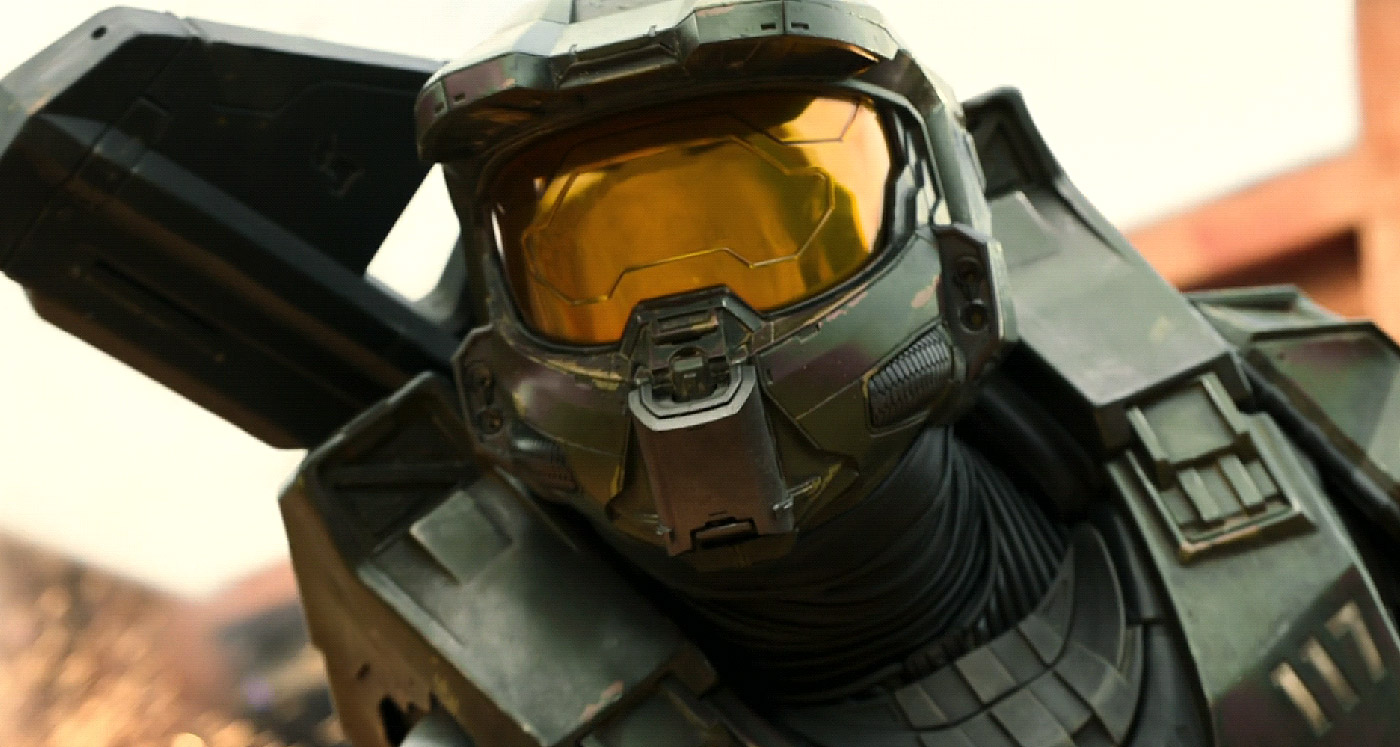
Source: Halo, Paramount+
Over the course of the season, canonical norms were shattered, characters were misrepresented, and the narrative went absolutely nowhere, all for the sake of making the series appear bigger and more complex than it really was. If this is what counts for a big budget production, it neither looks, nor feels like it.
A STUMBLE OUT OF THE GATE
Halo managed to shoehorn in all of its run-of-the-mill identity politics into the first episode, perhaps to get them out of the way in preparation for what was to come. By the time the second episode rolls out, much of that nonsense has faded into the background, and audiences are left with a diluted story that can’t carry the weight of the franchise’s iconography.
It all starts with the discovery of an ancient Forerunner artifact on the planet Madrigal, home to a rebel faction seeking to separate itself off from the UNSC, and Earth’s government. The Covenant attack Madrigal in the hopes of getting their mitts on the artifact, only to be stopped by John-117, otherwise known as the Master Chief.
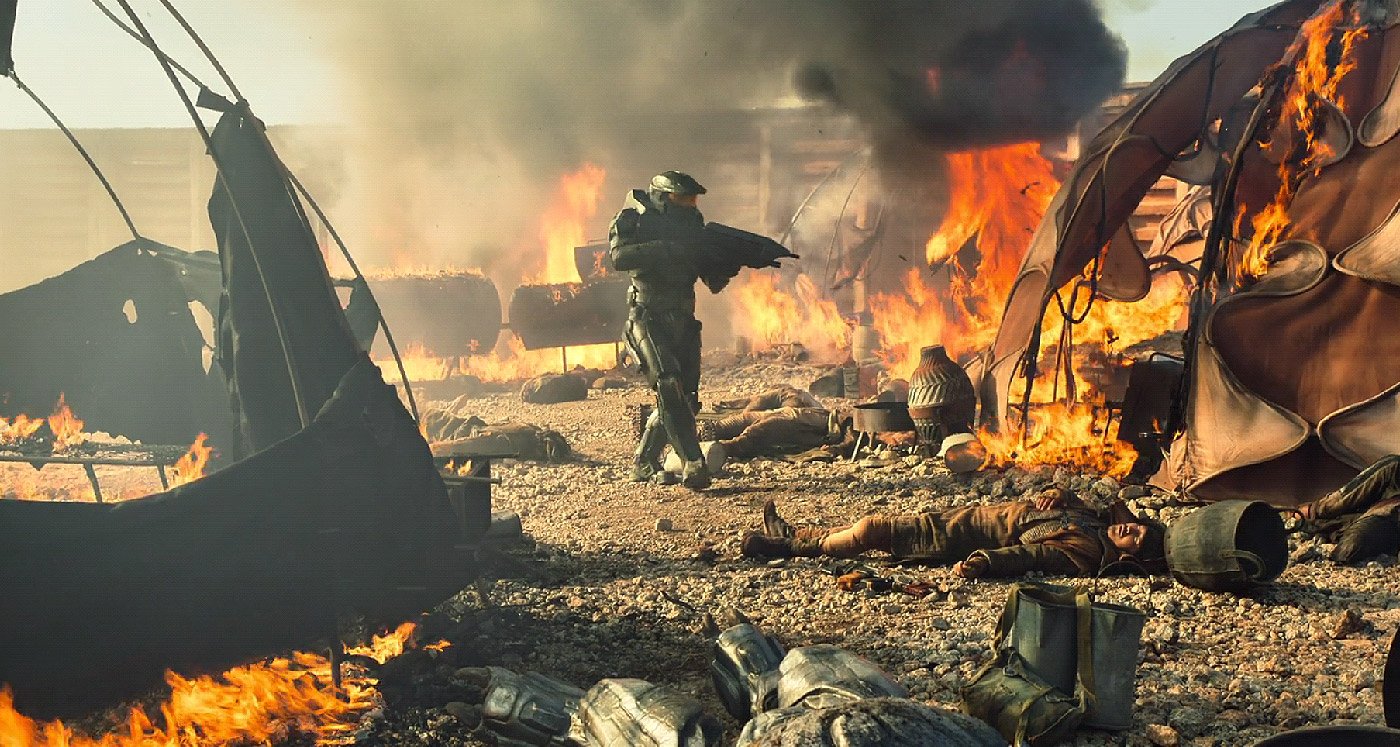
Source: Halo, Paramount+
With his Silver Team in tow, Master Chief dispatches Covenant forces with ease, and makes physical contact with the artifact, triggering a series of confusing and startling visions. He also manages to save the life of a young insurrectionist named Kwan Ha, whose people are wiped out during the attack.
The UNSC tries to extract information out of Kwan, before ordering her execution. The Master Chief defies those orders and flees with both Kwan and the keystone artifact in tow, hoping to find some answers. It’s here that the story limps its way slowly to the finish line with little in the way of excitement, or solid writing.
THE OVERALL STORY
The Master Chief soon discovers that the keystone is one part of a device capable of revealing the location of a massive super-weapon, which the Covenant want for their own religious ends. Meanwhile, the Covenant allow a young human female ward named Makee to infiltrate UNSC forces, and retrieve the keystone for her masters.
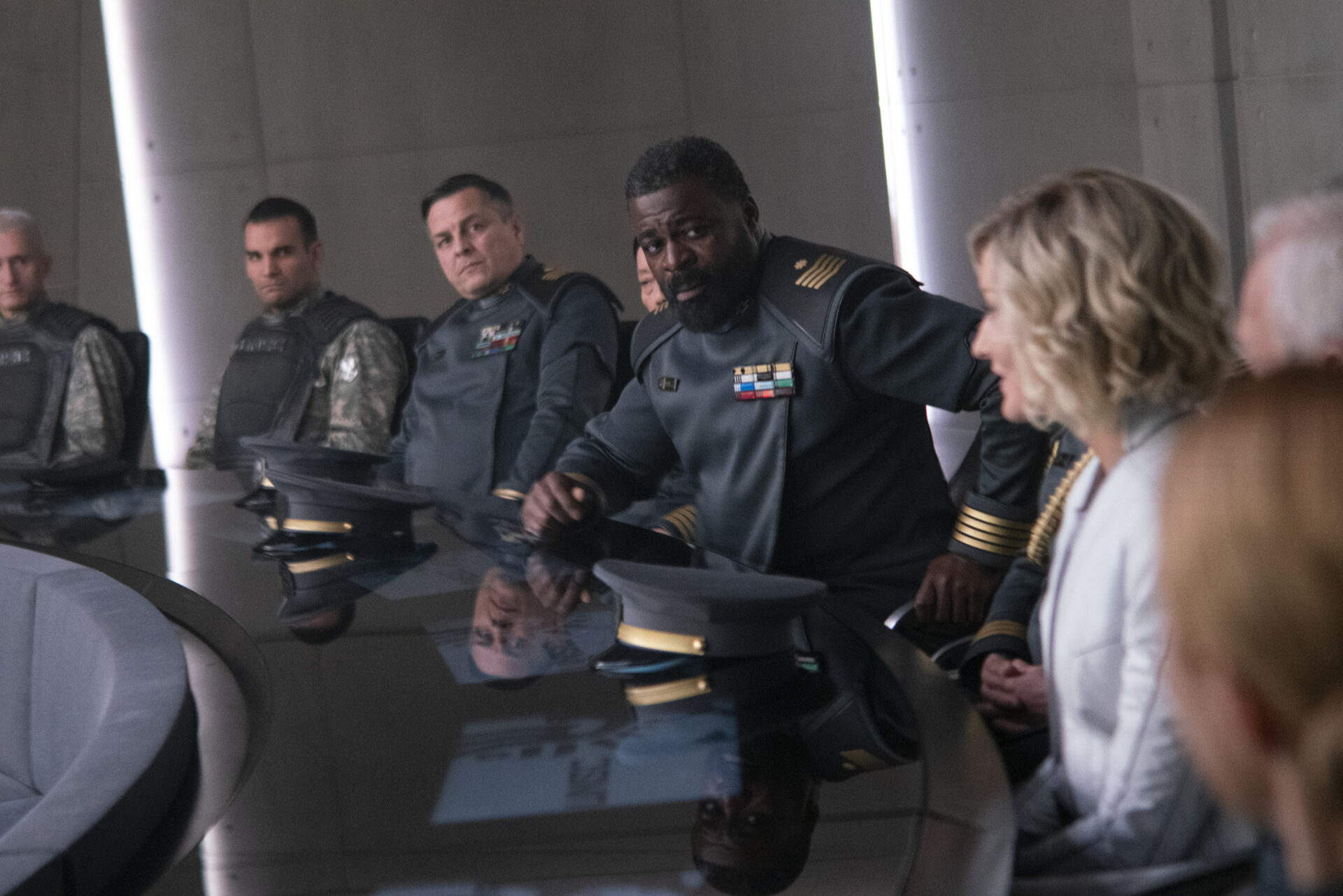
Source: Danny Sapani as Captain Jacob Keyes and Natascha McElhone as Dr. Catherine Halsey in Halo episode 2, season 1, Streaming on Paramount+. Photo credit: Adrienn Szabo/Paramount+
It’s here that the story splits off into three separate plot arcs – the main quest to unlock the secrets of the Forerunner artifacts, Kwan Ha’s quest to liberate the planet Madrigal, and the Master Chief’s increasingly volatile relationship with Dr. Catherine Halsey, founder of the super-secretive and highly controversial Spartan program.
In other words, so much drama.
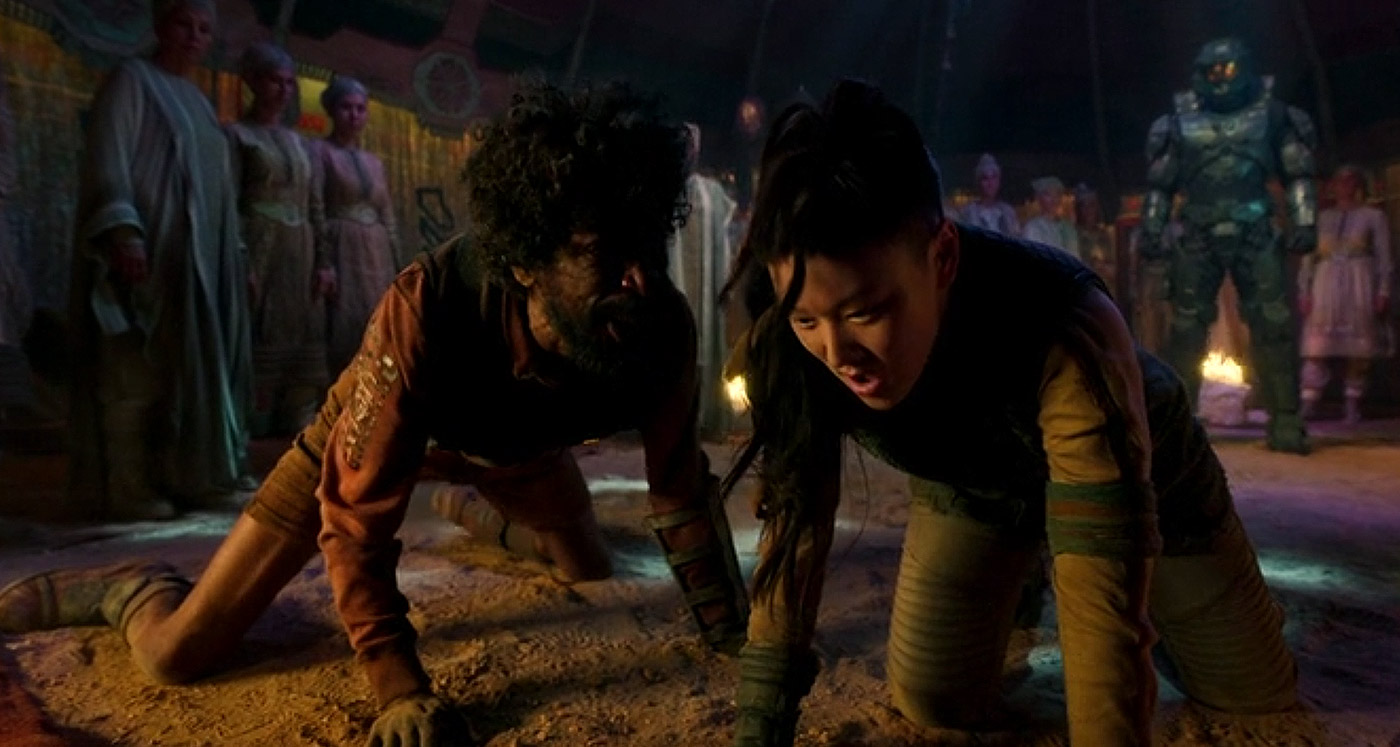
Source: Halo, Paramount+
It comes at the expense of the action, which really hurts the show as a whole. One can count the number of battles that take place on the fingers of just one hand, while the rest of the time is spent trying to make these plotlines feel interesting. It’s a sucker’s gamble that never pays off.
The show takes a bizarre twist in the seventh episode, which is dedicated exclusively to Kwan Ha battling against the tyrannical machinations of Vinsher Grath, a UNSC diplomat assigned to quell further resistance on Madrigal. This subplot has very little to do with the overall story, and there’s little reason for audiences to feel invested in the outcome.

Source: Halo, Paramount+
The Halsey narrative is a bit more interesting, sticking loosely to the character’s source material, while accelerating her chronology from a necessary nuisance, to a full-blown criminal in short measure. The video game version of Halsey possessed a moral compass capable of making her feel guilty for her actions, but it’s difficult to feel that from her TV counterpart.
Meanwhile, the show wastes no effort demonizing the UNSC and certain key political and military figures as irredeemable evildoers. Catherine Halsey sums up the overly nihilistic theme of the show’s plot when she insists repeatedly that “humanity is the problem.” As the plot thickens, so too does audience confusion.
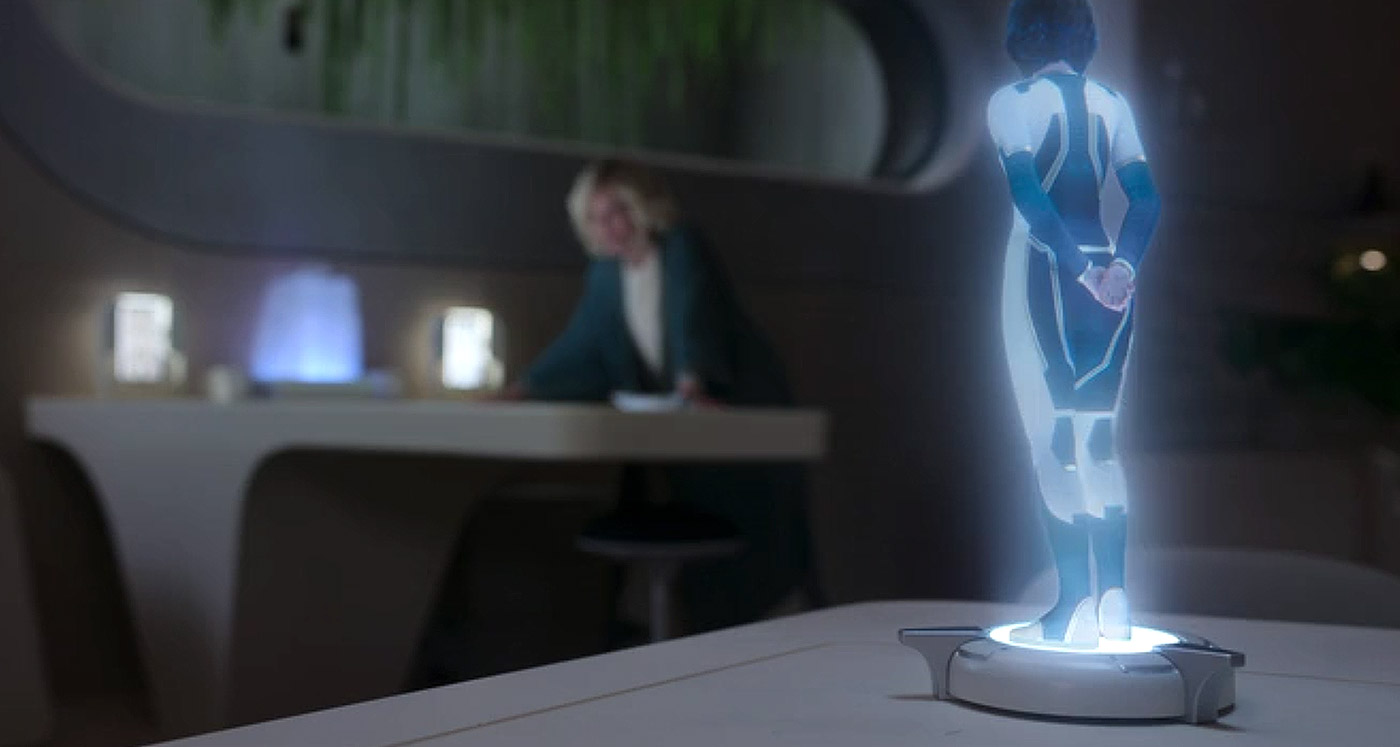
Source: Halo, Paramount+
With the Covenant on one front, and a morally bankrupt UNSC on the other, just who exactly is the viewer supposed to root for? It’s hard to make a case for the survival of humanity when almost every waking moment is spent actively running it down. The script feels laced with unsettling misanthropy, and devoid of heroic and aspirational values.
This is the major problem with the Halo TV series. While the game’s timeline acknowledged the UNSC’s amoral decisions, it never painted them as ruthless evildoers. When the writers decided to throw Kwan Ha’s story into the blender with the UNSC plot arc, it became an indistinguishable mess.
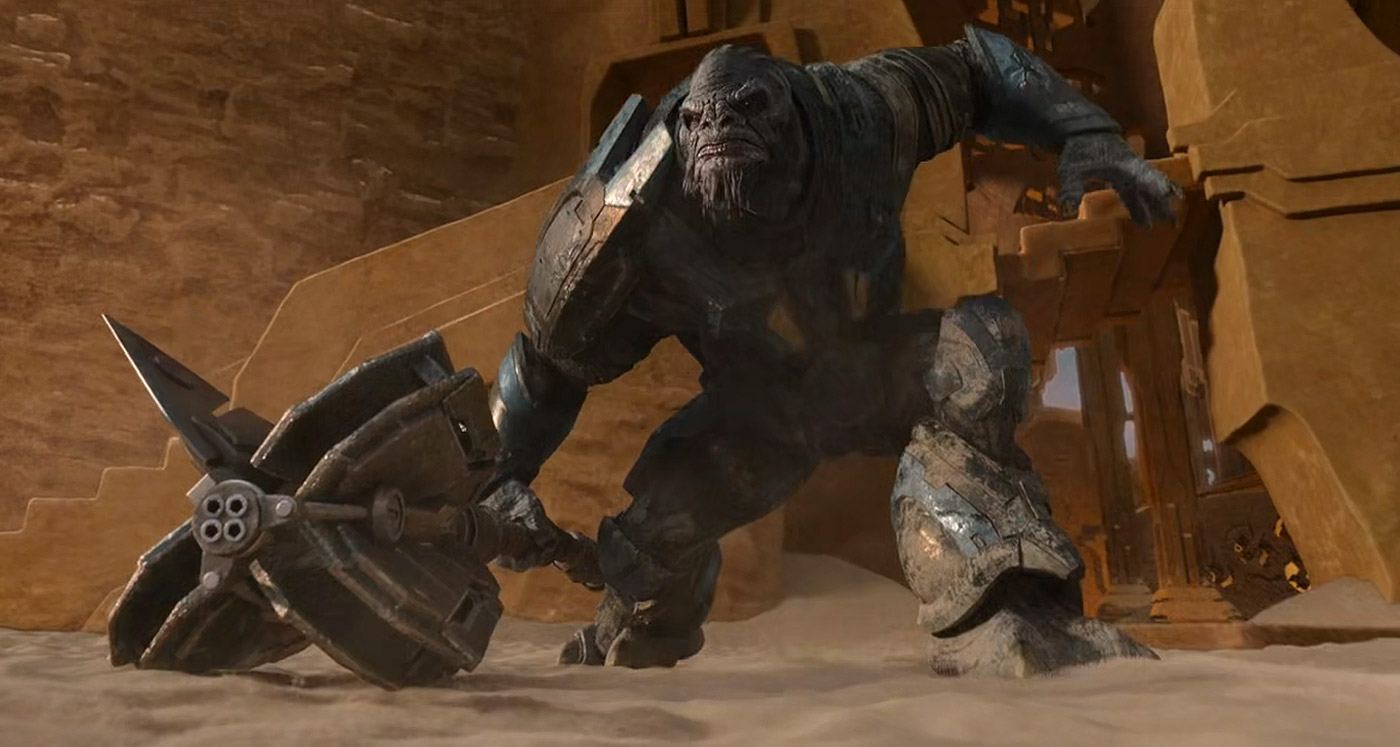
Source: Halo, Paramount+
By the time the last two episodes pull up to the stop light, it’s impossible to get the story back on track. The Master Chief and Silver Team navigate a rocky interstellar path to the planet Hesduros, where the Covenant plan to activate the keystones in the hopes of finding the location of the Halo ring.
There, the Master Chief dies on purpose in order to accomplish two objectives at the same time, by allowing his body and mind to be taken over completely by his AI sidekick Cortana. It’s an oddball creative decision that doesn’t fit with Halo canon in the least bit, and was obviously done in order to create a cheap cliffhanger for season two.
THE GOOD
There’s little to like about a show that is so flippant regarding the source material it’s trying to reference. The best that could be said is that at least the visuals are somewhat spot on. Everything from the Master Chief’s armor, to available weaponry, ships and creature designs are authentic, though not always high quality.

Source: Halo, Paramount+
Kudos should also be given to Jen Taylor’s performance as Cortana, who is perhaps the only character in the show who feels the least bit authentic. With two decades worth of Halo games to build her character, Taylor slips right back into form with ease. The technical team even saw fit to push her spoken dialogue to the center speaker channel, just like the video games.
The battles are largely hit and miss, as well. The opening confrontation between the Spartans and the Covenant in the first episode is noteworthy, and exciting. However, that’s a stark contrast to the final battle in the last episode of the season. Wedged in between are battles of varying quality, and there aren’t many of them to go around.
THE BAD
The word “travesty” is an understatement when trying to describe this adaptation, and the bulk of it comes from the showrunners and writers who purposely flaunted their disregard of the source material. This is quickly becoming one of the most irritating things in TV and movie pop culture, and it’s a suicidal way to try and adapt a property.

Source: Halo, Paramount+
The majority of fans largely rejected the notion of the Master Chief taking his helmet off in the first episode, but over the course of the season, he’s barely in uniform at all. Most of the time, actor Pablo Schreiber is stripped down to his under-suit while he “discovers himself,” at the expense of what fans really want.
The decision to allow the Chief to cut out his emotional suppressor was an act of creative malfeasance that should not go unpunished. Halo fans are not interested in a touchy-feely Master Chief who drops in on classical music recitals, and this decision robs the character of his stature and presence, damning him as a mere mortal among demigods.

Source: Halo, Paramount+
Rather than watch the Chief lay waste to entire battalions of Covenant forces in spectacular fashion, audiences are forced to endure the banality of watching him dig holes in the backyard of his childhood home, or stroll through the gardens with love interest Makee.
RELATED: Halo Star Pablo Schreiber Responds To Series Critics: “I Respect Your Opinion And I Love You Too”
Speaking of which, the Makee character stands as one of, if not the most superfluous character ever to get written into a show. Not only does her presence as a human indoctrinated in the ways of the Covenant feel silly, but her infiltration of the UNSC is handled with total incompetence on the part of the writing team.
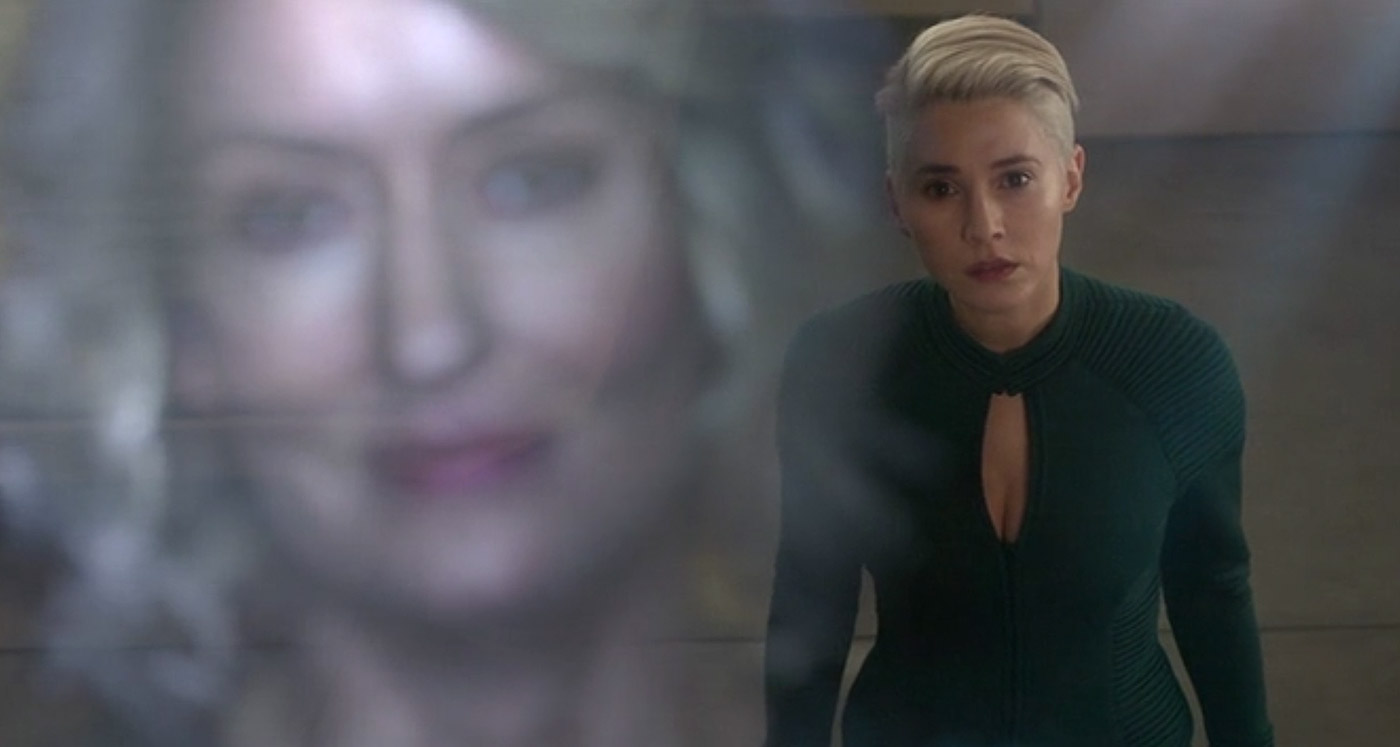
Source: Halo, Paramount+
Despite spending barely any time together, Makee falls for the Master Chief almost immediately, even going so far as to jump into bed with him. From there, she’s totally ready to switch sides and live among humans again, which is so preposterous that even the character of Jacob Keyes is forced to call it out indirectly in one of the later episodes.
Most of the actors are excellent in their own right, with a lot of charisma and presence, but they’ve been woefully miscast into roles they weren’t ready for. The overwhelming majority do not behave anywhere near to their video game counterparts, and that’s a hard sell, given the show’s primary target audience. Why alienate core influencer Halo fans with unrecognizable third-rate stand-ins? It’s bizarre.
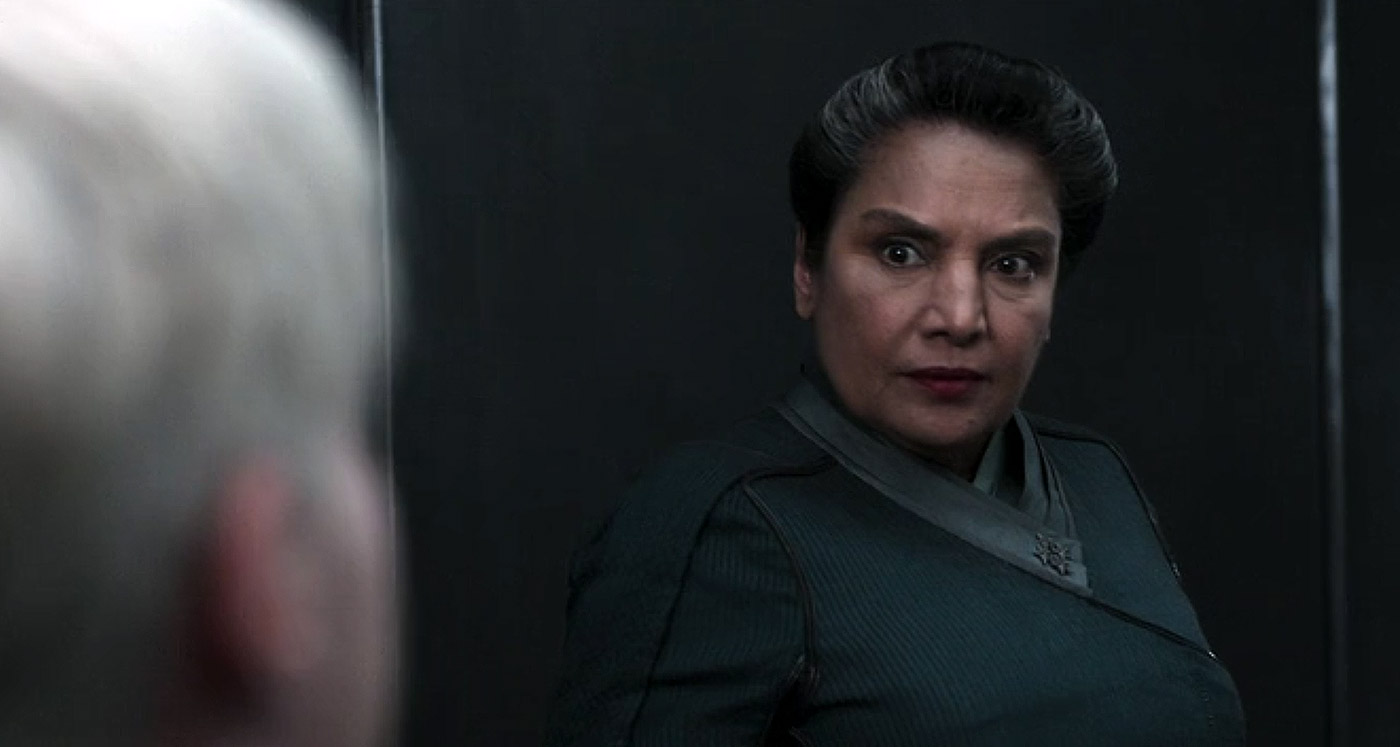
Source: Halo, Paramount+
Actress Shabana Azmi is a perfect example. Her portrayal of Admiral Margaret Parangosky feels disjointed and awkward from the start, and it never gets better. One gets the feeling that Azmi has absolutely no clue what she’s doing on the set of a Halo show, and is just there to collect a paycheck.
Natascha McElhone does shine in her portrayal of Dr. Catherine Halsey, though the character is far more manipulative and less upfront about her intentions than the video game version. Nevertheless, McElhone tends to steal every scene she’s in, which isn’t difficult when the actors around her feel totally foreign to longtime Halo fans.

Source: Halo, Paramount+
And finally, it should be noted that the visuals are either really good, or subpar, depending on the scene in question. This is a bit shocking, given that an estimated $90 to $200 million was spent on the show, yet couldn’t seem to maintain a consistent standard of quality throughout the season.
For instance, the aforementioned opening battle sequence in the first episode is a major highlight of the show, but the battle that takes place in the final episode is cringeworthy, to say the least. The CGI is terrible, the effects hit or miss, and the down and dirty combat looks hilarious and silly.
Worse, the entire conflict takes place in a setting that looks like it was ripped straight out of Unreal Tournament 2004, with about the same level of graphical fidelity.
THE CONCLUSION
Season one of Halo is a bet that has failed to pay off for both casual, and longtime Halo fans. The show has taken quite a shellacking from both critics and fans, and deservedly so. Its biggest problems stem from terrible casting decisions, poorly written characters, and a pretentious story that isn’t nearly as interesting as it thinks it is.

Source: Halo, Paramount+
It’s hard to muster up any sort of excitement for the second season, as one can expect the same plodding and stretched out story, designed to court viewers and convince them to stay for the long haul. Season one should have been about touching down on the actual Halo ring and unlocking a shocking secret, only to cut immediately to cliffhanger.
Instead, we get a “is he or isn’t he” insinuation surrounding the Master Chief’s Cortana-influenced mental state. My fellow Bounding writer Spencer Baculi has theorized that this is a bait and switch tactic, but I have another explanation. I believe this is an attempt by the showrunners to establish the “real” Master Chief – the guy who rarely speaks, and never takes off his helmet.
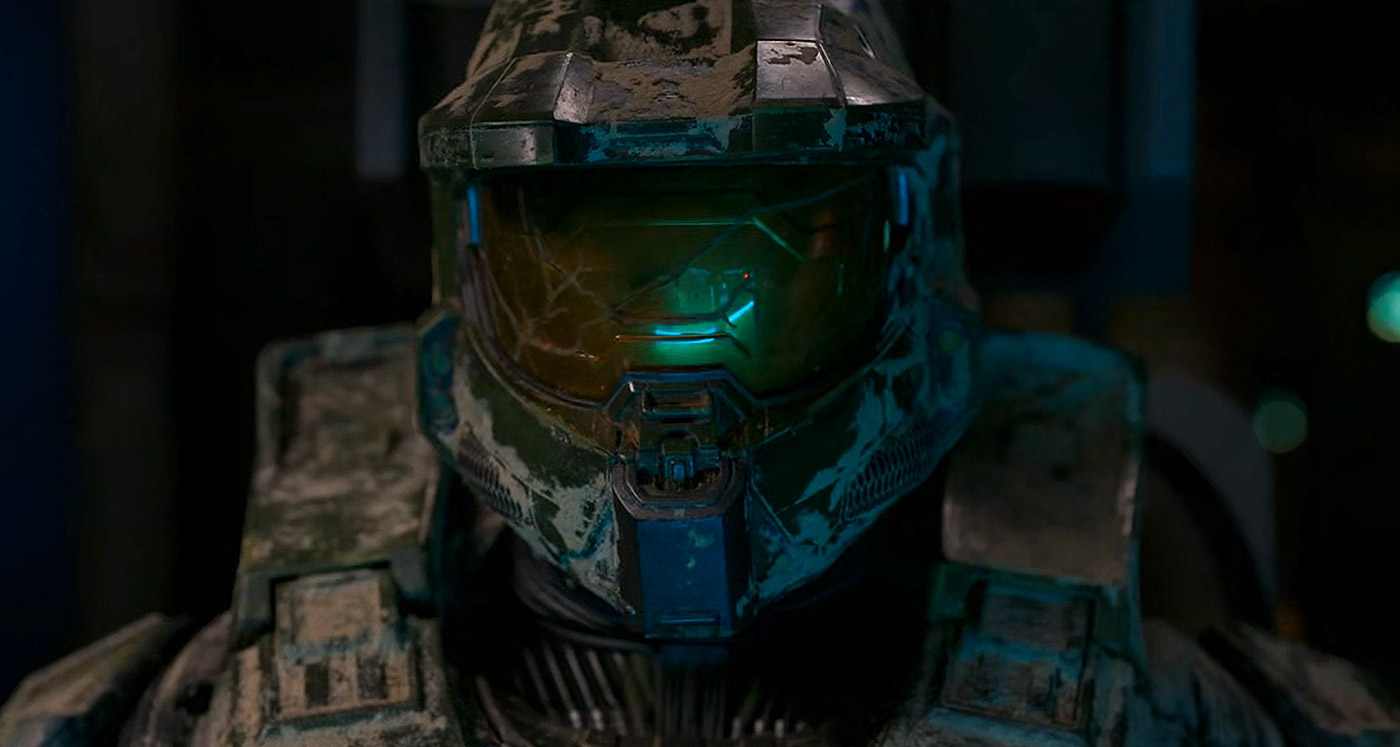
Source: Halo, Paramount+
Did fan backlash against the first episode play a role in this decision? It’s hard to tell, seeing as how there’s no definitive production timeline to reference, but it seems suspect. Nevertheless, things are not looking well for the show, and it remains to be seen what else the writers and showrunners will change for the purpose of damage control.
The fact that Halo’s two showrunners Kyle Killen and Steven Kane have both exited following the first season is telling. Halo should have been an earth-shattering, monumental hit, but it’s been relegated to the refuse pile in the space of just 9 episodes. It started off weak, and had to be carried out on a stretcher when it was all over.

Source: Halo, Paramount+
In summary, Halo is not a good TV show, and it’s an even worse adaptation. It flirts with the source material to appear genuine, only to pull the rug out from the audience, seemingly on purpose. There’s an aura of contempt and resentment directed towards longtime fans which feels palpable and undeniable, and neither the showrunners nor the actors are hiding it.
RottenTomatoes currently has Halo sitting at a 70% critics score, and a 51% audience score. That’s a fumble in every way, and it’s hard to see the show picking itself up from the dirt in season two. There’s too much bad floating around, and not enough good canonical elements from the Halo video game franchise to keep it from falling off a cliff.

Source: Halo, Paramount+
Our recommendation would be to skip this show, and cross your fingers for the possibility of Stephen Ford creating an appropriately lore-accurate Halo film in the future. Either that, or go back and replay the Halo games from start to finish all over again, just to wash the putrid taste of this hollow fanfic adaption out of your mouth.
More About:Reviews Television TV Reviews Video Games
